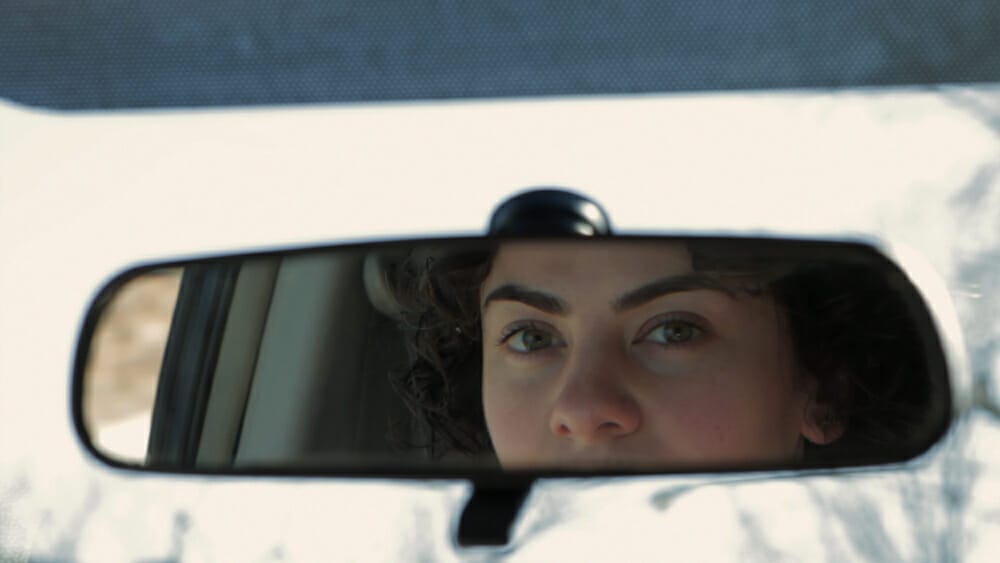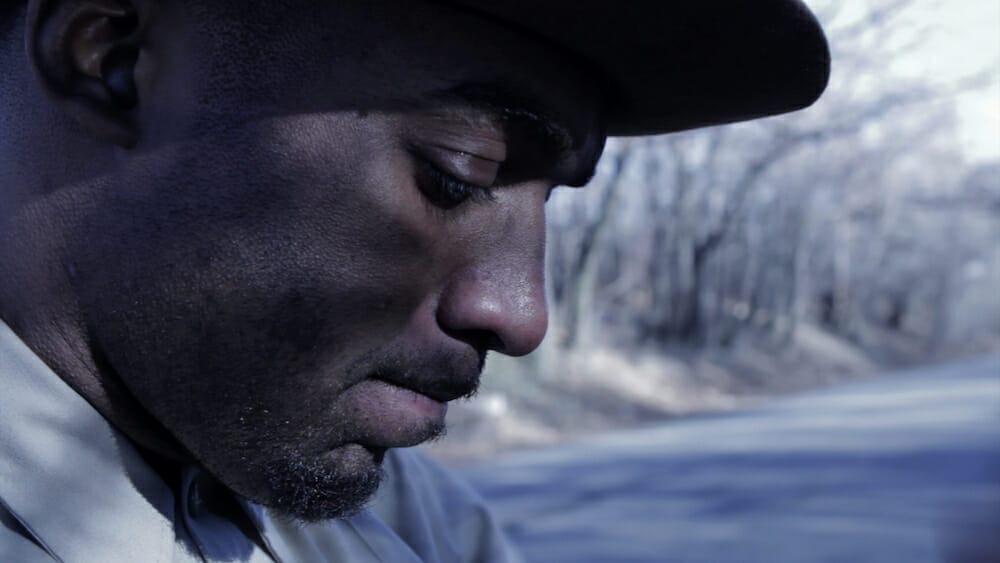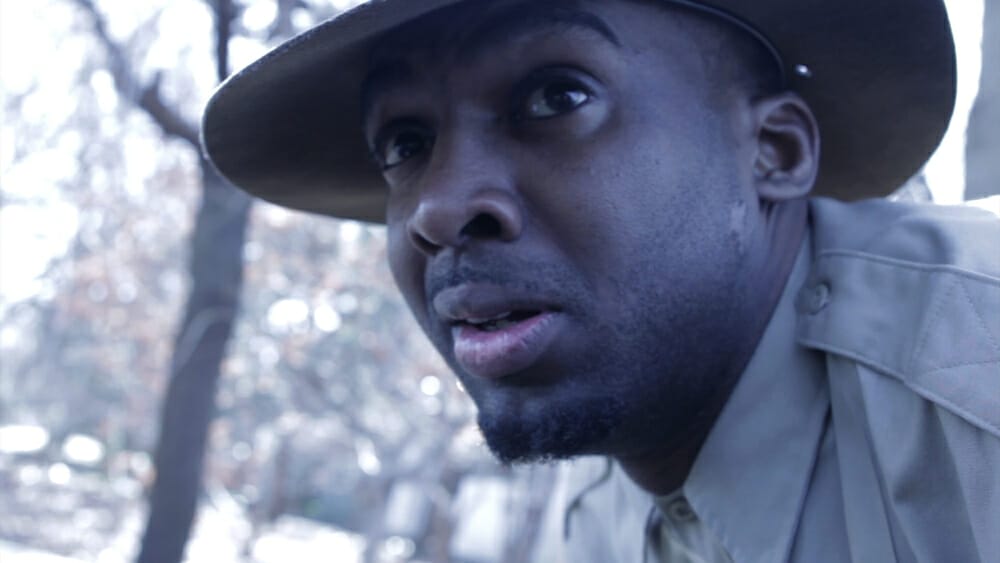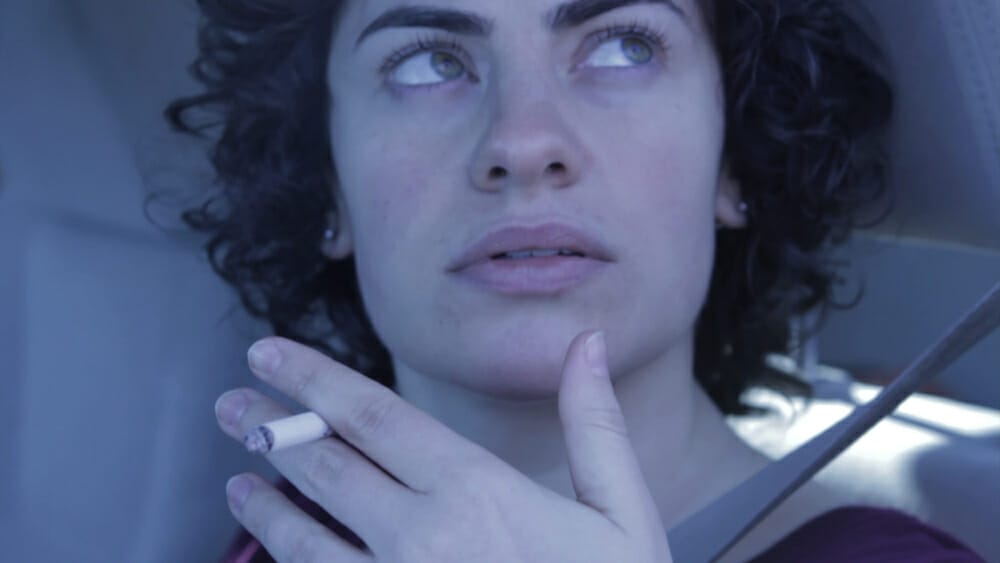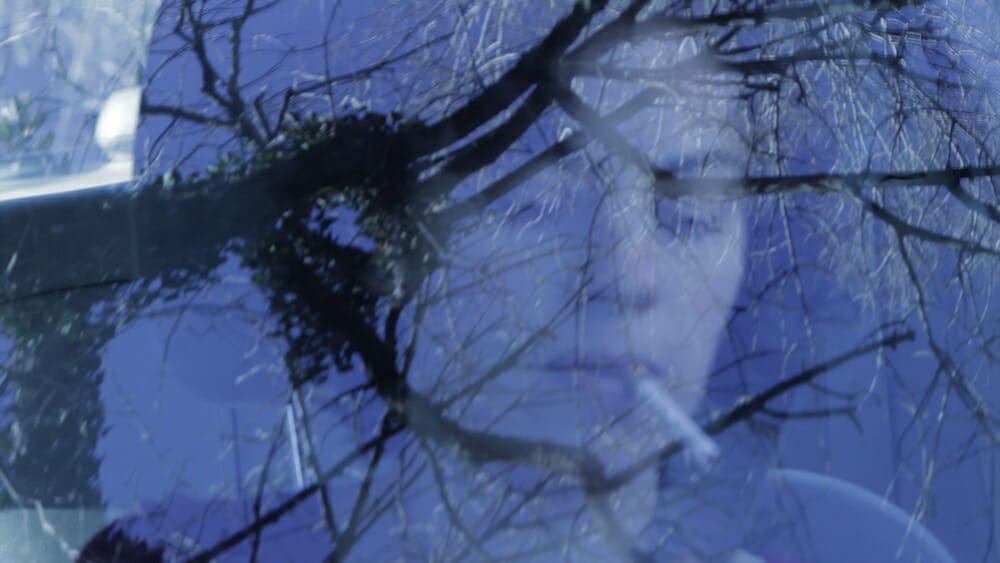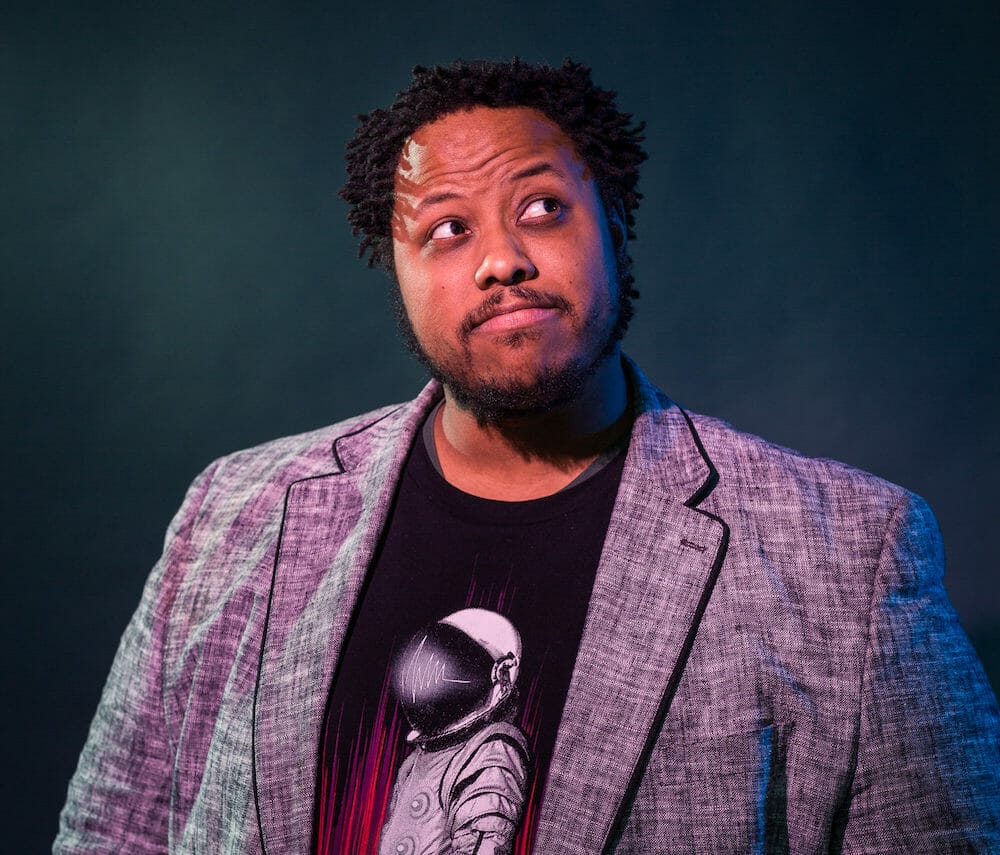Editor's Note- Read the related story--"
365 WAYS TO KILL AN AMERICAN Review – A Jarring and Relevant Vision"
At a recent screening of 365 WAYS TO KILL AN AMERICAN Spence Warren shared with the audience that he had no intention of being the D.P. (Director of Photography) for this film, and only agreed to meet with Director/Producer Jordan Rome to explain his limitations and why he wasn’t a good pick. As Amy Munice, Editor of Picture this Post notes, the cinematography of this production powerfully underlines the message and inherent dramatic content that comes in the territory of re-enacting the many scenes of police murders that animate the Black Lives Matter movement. Both the quality of the D.P. work and Spence Warren’s remarks were intriguing. Here, Picture This Post (PTP) asks Spence Warren (SW) to explain more.
(PTP) How did Jordan Rome talk you into becoming the film’s D.P.? (What has your role/work so far entailed?
(SW) I wouldn’t say she talked me into it; I’d say she inspired me to want to help. Jordan had told a mutual friend that she was looking for a cinematographer. That friend introduced us via social media and my immediate internal response was “I am so very much not your guy!” but - trusting the source of the intro - I decided “what’s the harm in a meeting? Maybe I can do my part by pointing this aspiring filmmaker in the right direction!” so I agreed to meet at a coffee shop in Logan Square.
It was a bitter-wind-chilled evening and the frost had not yet subsided in our fingertips before we were discussing the crisis of sanctioned, systemic violence against Black people over coffee. Suddenly, I came to a profound and unexpected realization -- this wasn’t simply a socially conscious actor with a movie idea, this was an intense, educated activist with a nuanced perspective and mission. She told me about her 365 Ways to Kill an American project and then showed me a proof of concept film she shot on a cell phone with a few actors, including her father. Over the course of our 45 minutes together, my intentions morphed from offering to help Jordan find an actual cinematographer to helping Jordan bring her vision to life by whatever means I had at my disposal.
I did inform her that, though I had some modest shooting experience and a decent (depending on who you ask) camera, I am not a cinematographer thus probably not the best choice. Like all wise artists, Jordan understood that a zealous collaborator sitting across the table is worth a hundred seasoned professionals you may or may not meet -- and so our collaboration began.
My roles on 365 Ways to Kill an American: Sandra Bland were Co-Producer, Director of Photography, Editor, Colorist, and ADR Recordist.
Your D.P. touch on this film clearly adds to the dramatic tension of each scene. Were these new cinematography techniques for you or?
Thanks very much for saying so. This was my first time making white balance choices with the intent of leaning the colors toward particular temperatures in-camera. White balance is a tool primarily designed to ensure that neutral colors are rendered correctly so I imagine this approach might be unorthodox -- perhaps even ill-advised. In any case, Jordan and I decided on employing the image system of using colors to express mood shifts, and we were clearly aligned on what those colors would be so I decided (taking into account my very rough understanding of the limitations of my Canon 7D’s 4:2:0 color space) to use several different, specific white balance settings with those choices in mind so that I didn’t have to push the colors very far in post-production to get the desired effect.
Also, every shot was handheld, which is something I’d done plenty of as a camera operator for live events but I couldn’t be sure of how that would work for a movie. On one hand: The nice thing about shooting narrative this way is you get to move very quickly from one setup to the next. Unlike live events, on a movie set you get to practice everything with the performers, coordinate maneuvers and you get to have them do things again when they don’t work. On the other hand: Unlike live events - every moment you capture in a movie has to be meaningfully composed, every shot must fit neatly within a visual rhythm and every camera move must be artful. It can be especially challenging to do all that when your body is the tripod, there’s no monitor and there’s no one to pull focus for you.
How did you approach blocking out each scene in the movie? Did you and Jordan decide ahead of time what you wanted the emotion for the view to be? Or?
Jordan comes from the theater so she has a very healthy respect for rehearsal. I invited myself to one of the rehearsals she had at her apartment. We set up chairs in her dining room to mimic the car and then Jordan, Djvon, and Cassandra worked out blocking while I observed. Most of our choices were made then and there. For any novice and/or aspiring cinematographers reading this: I can not overemphasize the benefits of sitting in on as much rehearsal as possible. An understanding of how the director and actor(s) intend to have their characters navigate the physical space will allow you and your director greater control over the camera as well as help to unify your visions. Rehearsal also allowed the four of us to establish a great trust and rapport which set a foundation for some nice discoveries. There is - for an example - a shot in which we are over Djvon’s shoulder on Cassandra as Djvon crosses the frame and then Cassandra rolls the window up. Cassandra remained so committed to the moment after the window closed that instead of cutting as we intended, we kept rolling and we noticed the reflection of bare tree branches and bushes on the window. Those reflections gave the feeling of bars on a cage, fractured glass, a spider’s web and death all at once. Patience and trust led us to spontaneously discover another image system we could weave into the movie! This would inform the framing of a number of our shots going forward. Regarding plans we discussed beforehand and walked onto set with: We did talk at some length about a mood coding image system using color grading, hence the warm colors at the opening of the film and progressive coolness of color as tensions rise. We also discussed living in the medium close-up range for most of our shots so as to invite the audience into the perspectives of both characters.
How many takes were involved in creating each of these shorts? Are there techniques that you hope to repeat in later episodes?
I don’t precisely recall but offhand, I’d say that our coverage ratio was around 4:1. Jordan rehearsed her actors thoroughly so we didn’t need a lot of takes to get what we were looking for.
I think the shooting technique choices should always lie with Jordan and her DP and I don’t see myself in that role moving forward. That said, so long as shooting techniques are designed to express character and tell story, it doesn’t matter so much what those techniques are.
How does the low-budget nature of this project affect how you go about this project and/or the final project? If you suddenly got Hollywood Studio type funding what would be your priorities on what to change?
The size of the budget will always affect production in a number of ways. On “365 Ways to Kill an American: Sandra Bland” the shooting crew was very small - just 3 of us and the 2 actors. This meant that we had to work with minimal equipment and we had to build our shot list and schedule in such a way that very few things needed to happen at once. See -- when you’re shooting on a shoestring budget, it behooves you to work in such a way that you can tackle one task at a time and if you don’t want “one task at a time” to lead to an eighteen-hour day, the tasks have to be simple -- no contra zooms, no complicated 1’ers, no Jib shots, few if any lens changes, etc. We were not able to get a permit for the street which meant the production had to keep a very small footprint. We would have no control over pedestrian or vehicle traffic, so we had to select a location with very little of both. This - in turn - meant we had a very limited set of location options. At our location there were cops sitting in their car, watching us shoot for a little while. This was harrowing for us because we knew that those cops were well within their rights to make us disperse; thankfully they did not. Having no art department meant that we had no ability to make a police car. Having no costumer meant that our police costume was not quite what it needed to be in order to hold up to a medium or wide shot -- which is another key component of our choice to shoot mostly in medium close up. I could go on, but I imagine you get the idea; the less money there is to spend, the more subtractive minimalism becomes the rule of the day and the affects are exponential.
If we somehow got a big, bloated budget to shoot one of these, I don’t think our priorities would change so much as our approach. Our top priority would still be to tell the most honest, perspective-rich story we could but our costumes would be better, our props would be better, we could have background talent and picture cars. All of that plus access to high-end equipment and the ability to have more shoot days and a bigger crew would lead to a wider range of shooting techniques for us to choose from. The resultant increase in production value would naturally expand the size of our audience and thus the reach of our message and - perhaps best of all - we could pay our crew!
How did the Community TV projects you worked on as a teen help land you in your current day job? And affect how you approached your work on this film?
Community TV Network was where I found my desire to be a filmmaker and - by extension- an artist. Quite a bit of what I am and what I do (musician, puppet maker, filmmaker, film worker, etc. ) is a direct result of my time there. Principles I apply on set like subtractive problem solving and putting critical thinking into practice are based in principles I first learned at CTVN. My first job as a production assistant was for their video services department. I got my first job as a commercial production assistant (which eventually led me to Art Directing and Props) because of a recommendation made by someone I worked with at CTVN.
Before Jordan Rome approached you about being the D.P. were you active in Black Lives Matter or other protests against police violence and racial profiling?
As of yet, I have not been directly engaged with Black Lives Matter. In the past I’ve worked with Community Renewal Society and Americorps. In the present, filmmaking is my activism. In the future, I hope to find in myself the capacity to do more . . . for direct action activism is probably, ultimately the cure to all social maladies.
What are the unique possibilities opened up by the film art form in general and this particular script in communicating the emotions and facts of these murders?
Motion Picture (film, television etc.) works on two of the physical senses at once to tell story and it does so in a way that offers an intimacy of perspective like no other art form. We use the pacing and coloring of images set to music with varied shot sizes and sounds deliberately placed along a vast audio spectrum to bring the human imagination to life. While any storytelling art-form can fire images into the imagination of an audience, none can do so with the sensory vividness of motion picture. With that power, it is possible to get people of many walks of life to see Sandra Bland as a regular motorist who lost her life because a bully didn’t like her attitude. With that power it is possible to make people remember that Dae'Anna Reynolds was four years old when she witnessed a policeman commit a murder just before being carried off and put in the back of a police car accompanied by her handcuffed, freshly traumatized mother. Activist organizers and history itself teach us that once people are agitated around their values, they can be compelled toward compassion and into action. It is possible that such remembrances and heightened perspectives might agitate people to affect social change in casual conversation, in media, in politics, in the streets . . . throughout the world.
What do you and Jordan plan next for this film?
We’ve discussed a number of possibilities for the future of 365 Ways to Kill an American. The future, though uncertain is bright and we hope you and yours will stay tuned.
Other comments?
Your perspective will color your appraisal of every event you experience. By committing yourself to expanding your perspective, you increase your capacity for compassion and in so doing, you make the world an easier, safer, better place in which every kind of person can live.
Photos courtesy of 365 Ways To Kill An American

